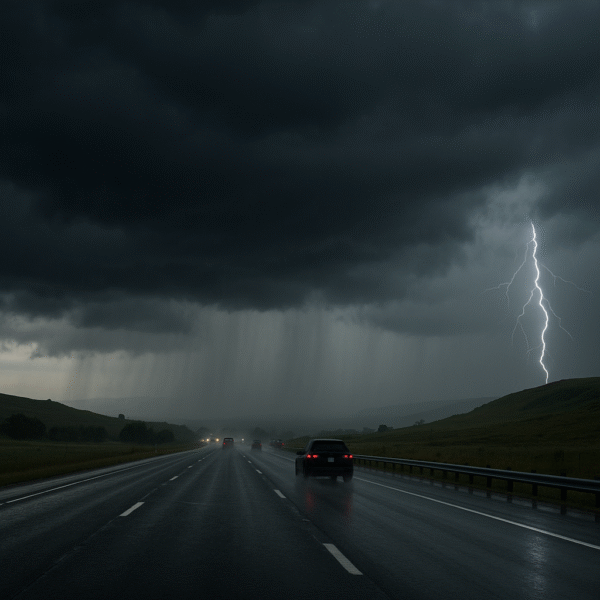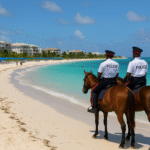Tourists planning to explore the scenic landscapes of Maryland, Virginia, and West Virginia this week should be prepared for colder-than-usual mornings. The National Weather Service (NWS) has issued a frost advisory covering parts of these states, warning that temperatures could dip close to freezing, particularly during early morning hours.
The advisory, in effect from 2 AM until 8 AM EDT on Monday, signals a drop to around 34 degrees Fahrenheit (1 degree Celsius). While this is a temporary condition, such frosty mornings can influence travel schedules, outdoor sightseeing, and even the safety of rural roadways. Travelers heading to mountain towns, lakeside retreats, or hiking trails should factor in the cold snap when finalizing plans.
Regions Under Frost Advisory
The frost advisory includes some of the most picturesque destinations in the mid-Atlantic, each attracting visitors for its natural beauty and outdoor recreation. The affected areas include:
- Maryland: Eastern and Western Garrett Counties
- Virginia: Western Highland County
- West Virginia: Western Grant County and Western Pendleton County
These regions, with their rolling mountains, pristine lakes, and charming small towns, remain high on the list for tourists seeking outdoor adventures. However, with frosty conditions expected, travelers should take extra care when planning morning activities.
Effects of Frost on Tourism and Outdoor Activities
For many, frost might seem like a minor inconvenience, but its effects can be significant for visitors.
- Vegetation and Wildlife: Sudden cold snaps can damage sensitive plants, particularly those blooming during early autumn. Trails and parks may look different than usual as plants respond to the temperature drop. Wildlife activity may also shift, making early morning spotting less predictable.
- Outdoor Adventures: Frost can leave hiking paths, wooden bridges, and rocky surfaces slippery. Campers, bikers, and hikers are advised to wait until later in the morning when the sun clears the frost and conditions stabilize.
- Travel Infrastructure: In higher elevations, frost on road surfaces may create icy patches, especially in shaded mountain curves. This poses risks for drivers unfamiliar with rural routes.
Key Tourist Destinations Affected
Several popular attractions fall under the frost advisory, each drawing visitors for unique reasons.
- Garrett County, Maryland: Home to Deep Creek Lake and Wisp Resort, this region attracts outdoor enthusiasts year-round. While boating and hiking remain popular, frosty mornings may limit early-day activities. By mid-morning, conditions typically improve, allowing safe exploration.
- Highland County, Virginia: Known for its pristine valleys and as a gateway to the Monongahela National Forest, Highland offers exceptional birdwatching and stargazing opportunities. Tourists should note that frost may reduce visibility during sunrise treks.
- Grant and Pendleton Counties, West Virginia: These counties feature stunning ridges, trails, and access to the Canaan Valley. Visitors seeking mountain views or autumn foliage should delay hikes until frost dissipates for a safer and more enjoyable experience.
Safety Measures for Tourists
To make the most of a trip while staying safe, visitors should adopt practical safety habits:
- Dress in Layers: Morning frost calls for warm clothing, gloves, and insulated footwear. Layering helps adjust as temperatures rise later in the day.
- Check Local Forecasts: Weather in the Appalachians can shift quickly. Tourists should monitor updates from trusted weather services before heading outdoors.
- Avoid Early Morning Driving: If possible, plan travel after sunrise when frost begins to melt. This reduces risks on winding, rural roads.
- Protect Sensitive Plants: For those staying at lodges, cabins, or vacation rentals with gardens, consider covering plants overnight to shield them from damage.
- Stay Alert on Trails: Trails may look deceptively dry but could hide icy patches. Use trekking poles for balance and start hikes mid-morning for safer footing.
Protecting the Local Ecosystem
Beyond tourism, frost has ecological consequences. The freeze can harm crops, native plants, and flowering shrubs, which in turn affects wildlife dependent on these resources. Visitors are encouraged to be mindful of this delicate balance. Avoid stepping on frost-covered grass or plants in parks and gardens, as they become more fragile during cold snaps.
Local communities often take steps to minimize damage, such as advising residents and visitors to cover outdoor vegetation with cloth or tarps. Tourists staying in rural accommodations can ask their hosts for guidance on local practices to help preserve the natural environment.
Looking Ahead: Weather Changes and Travel Outlook
The frost advisory is short-lived, and temperatures are expected to rise steadily through the morning hours. By midday Monday, travelers can expect clearer skies, more comfortable conditions, and the return of safe outdoor access.
For those visiting the affected regions later in the week, conditions should return to normal, allowing for hiking, sightseeing, and other recreational pursuits without frost-related interruptions. Still, the advisory serves as a reminder of how quickly weather can change in mountainous areas, and how preparation can make the difference between an interrupted trip and a memorable adventure.
Final Thoughts for Travelers
While a frost advisory may briefly challenge travel schedules in Maryland, Virginia, and West Virginia, it should not deter tourists from enjoying the region’s natural wonders. From the sparkling waters of Deep Creek Lake to the sweeping views of the Canaan Valley, the mid-Atlantic’s landscapes remain breathtaking, even with a touch of frost.
By planning activities later in the day, dressing warmly, and taking necessary precautions, visitors can still enjoy everything these destinations offer. With clear skies expected once the advisory lifts, travelers will find the region’s autumn scenery even more enchanting after the morning chill.
For more travel news like this, keep reading Global Travel Wire















